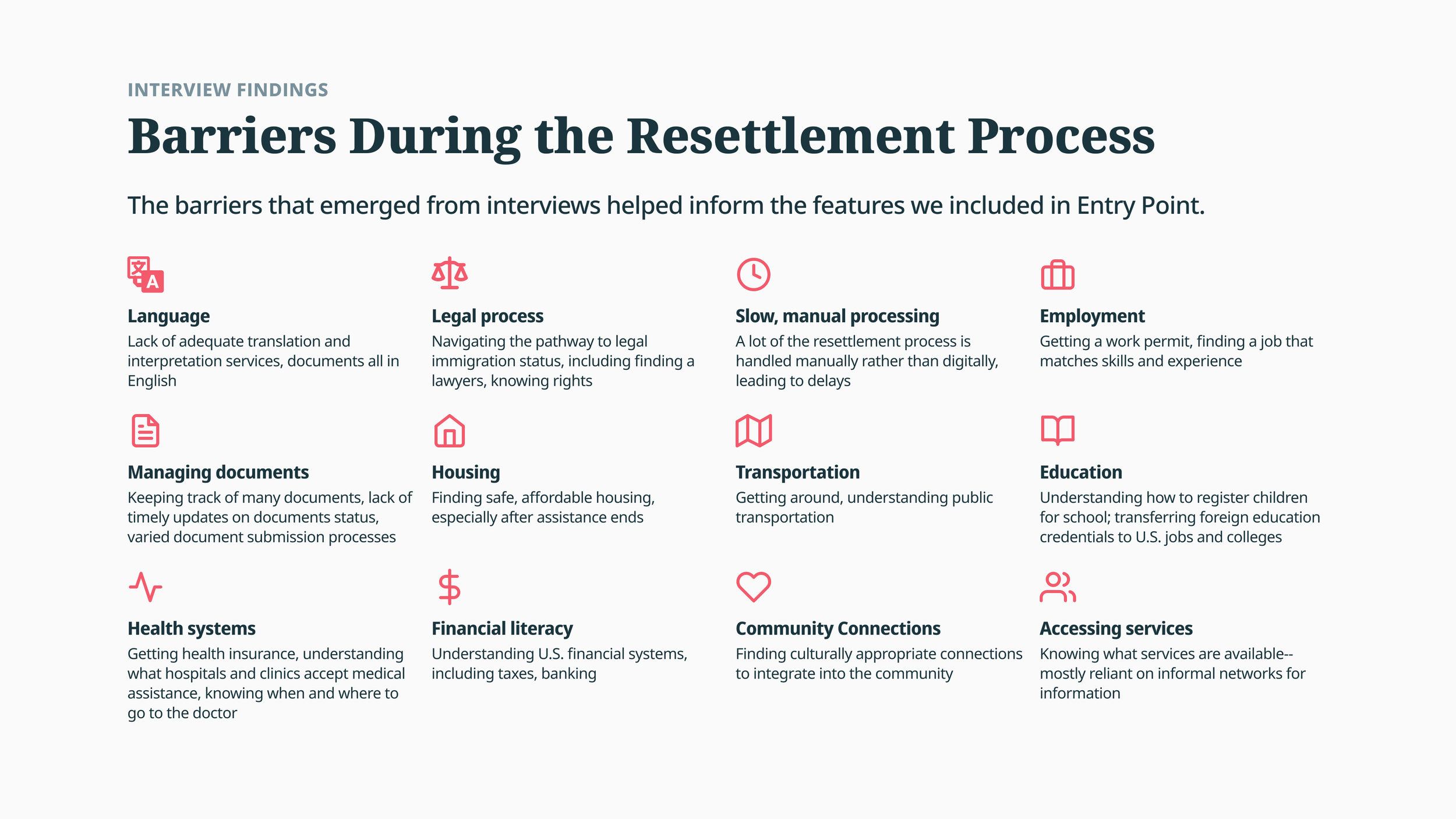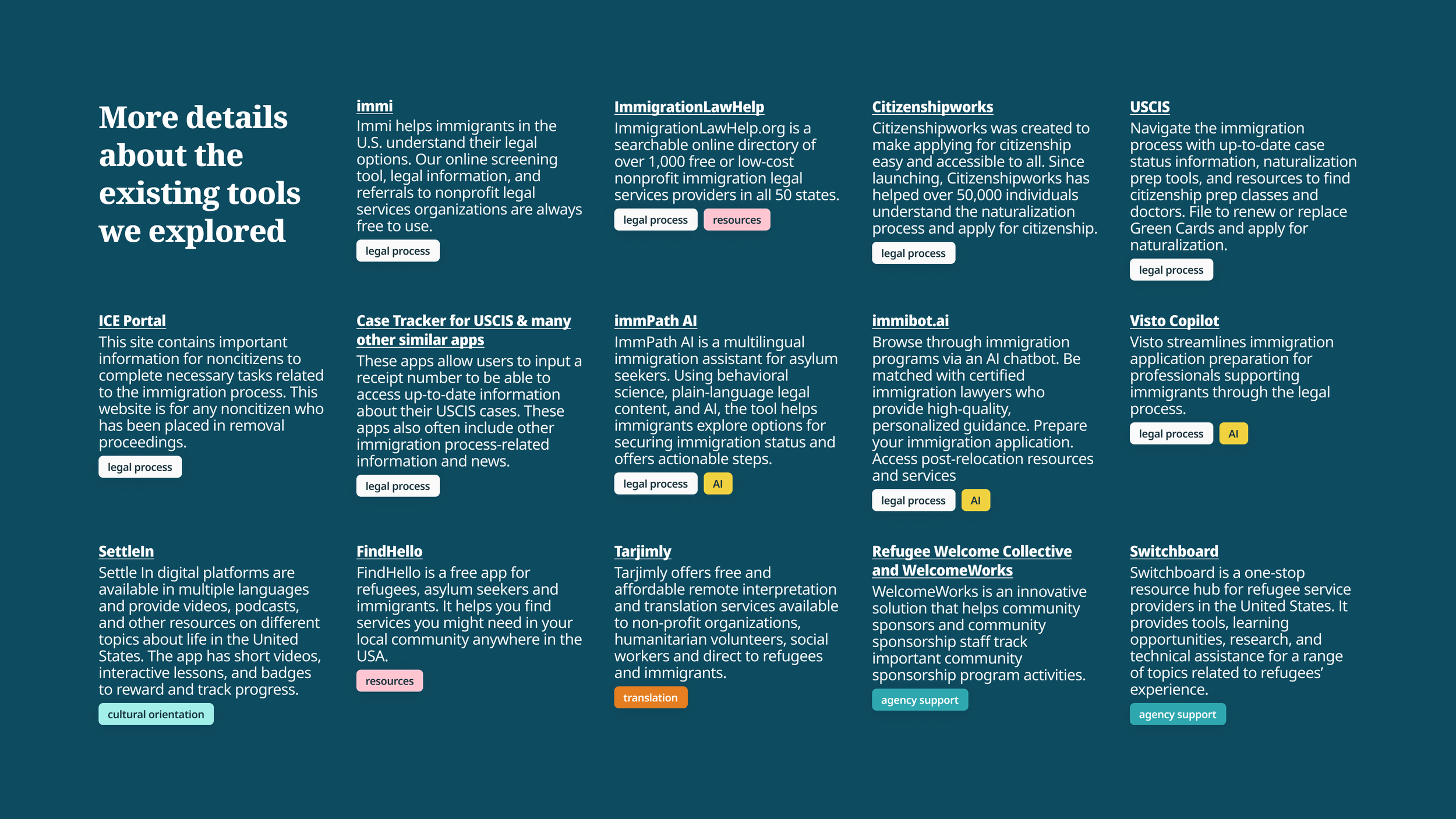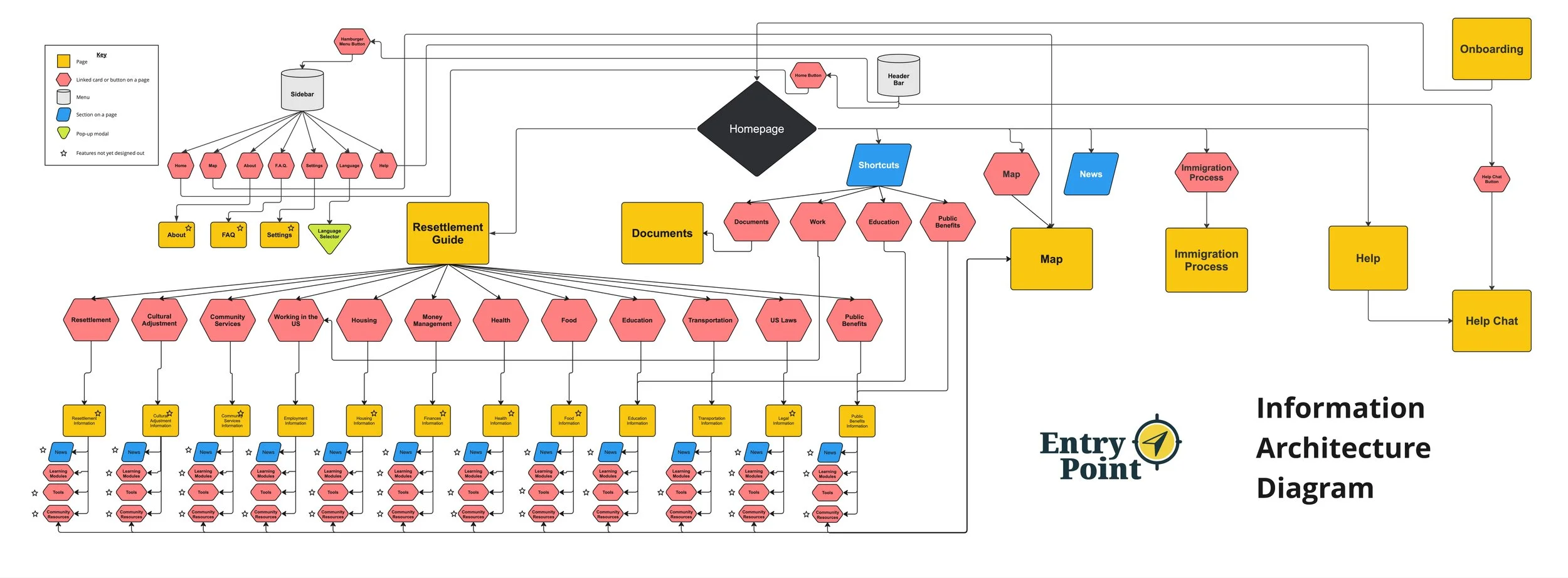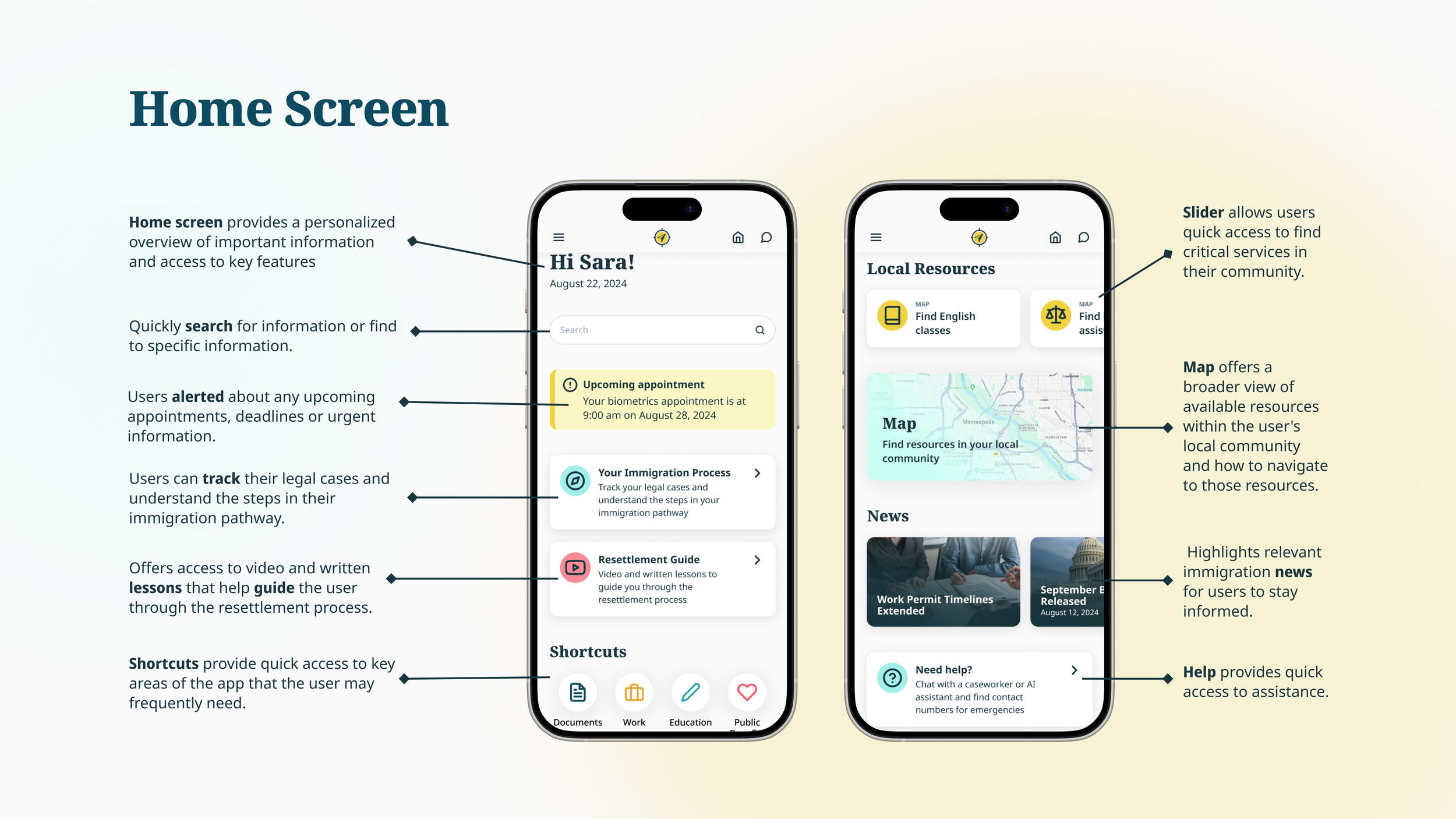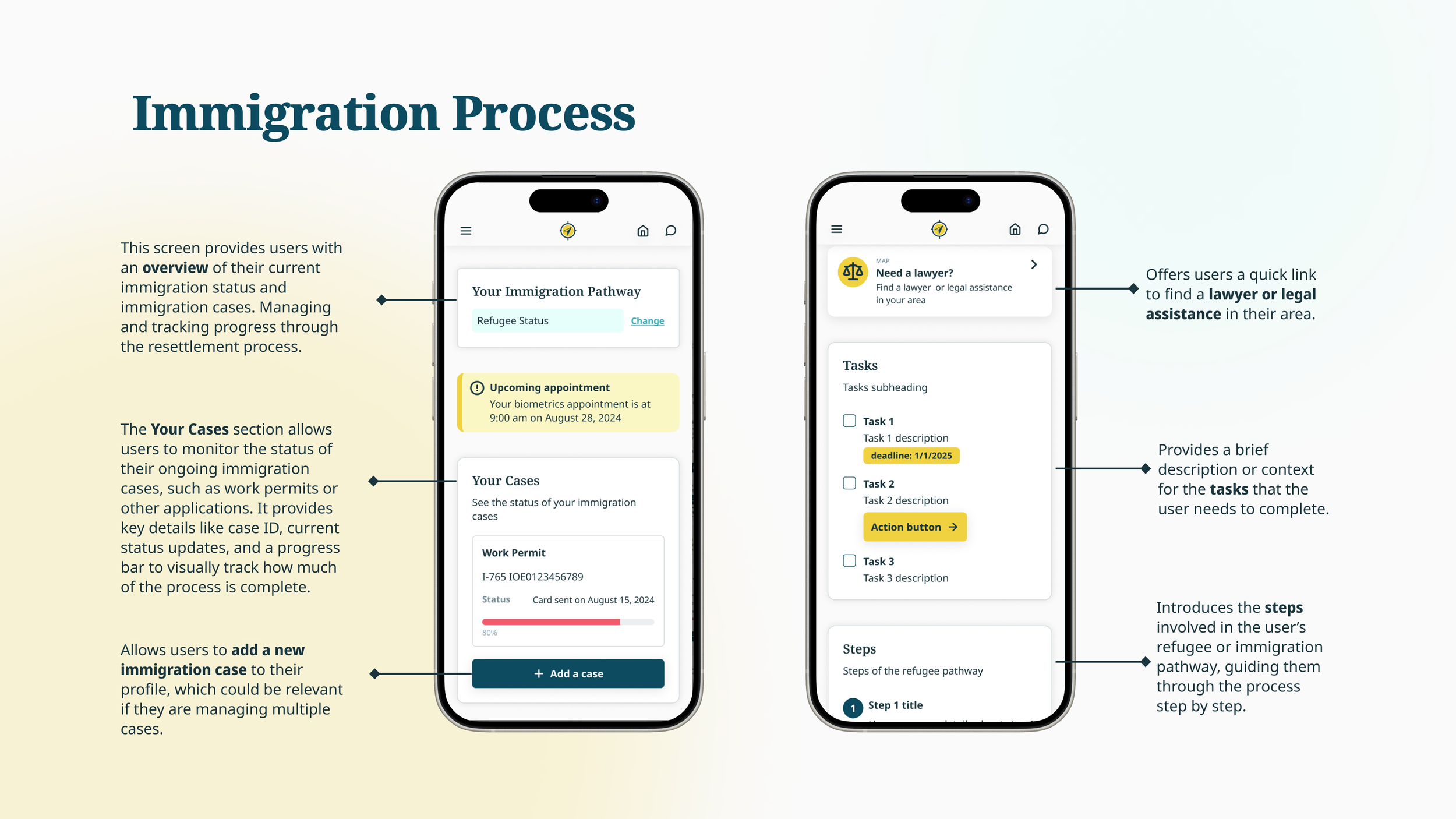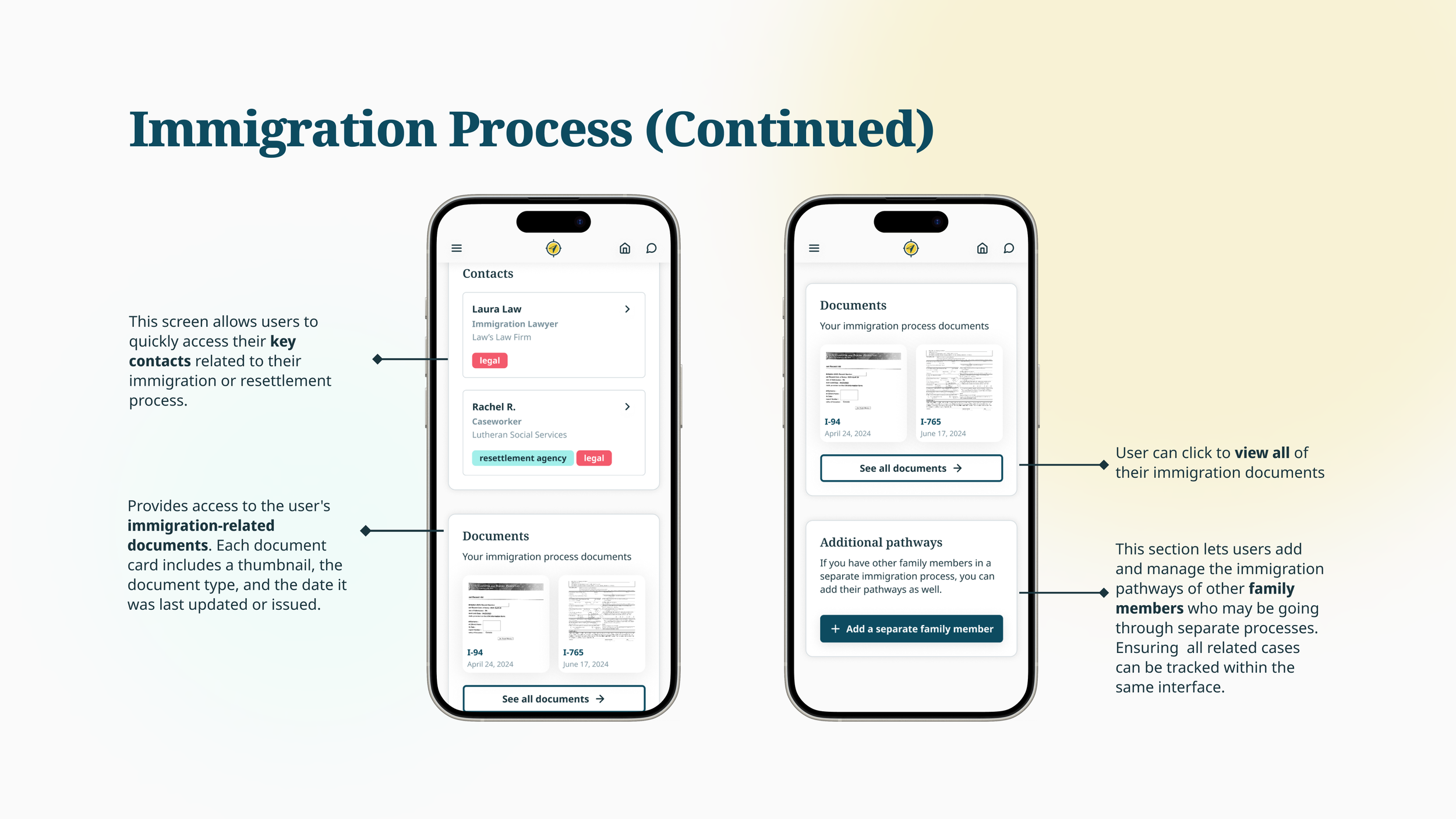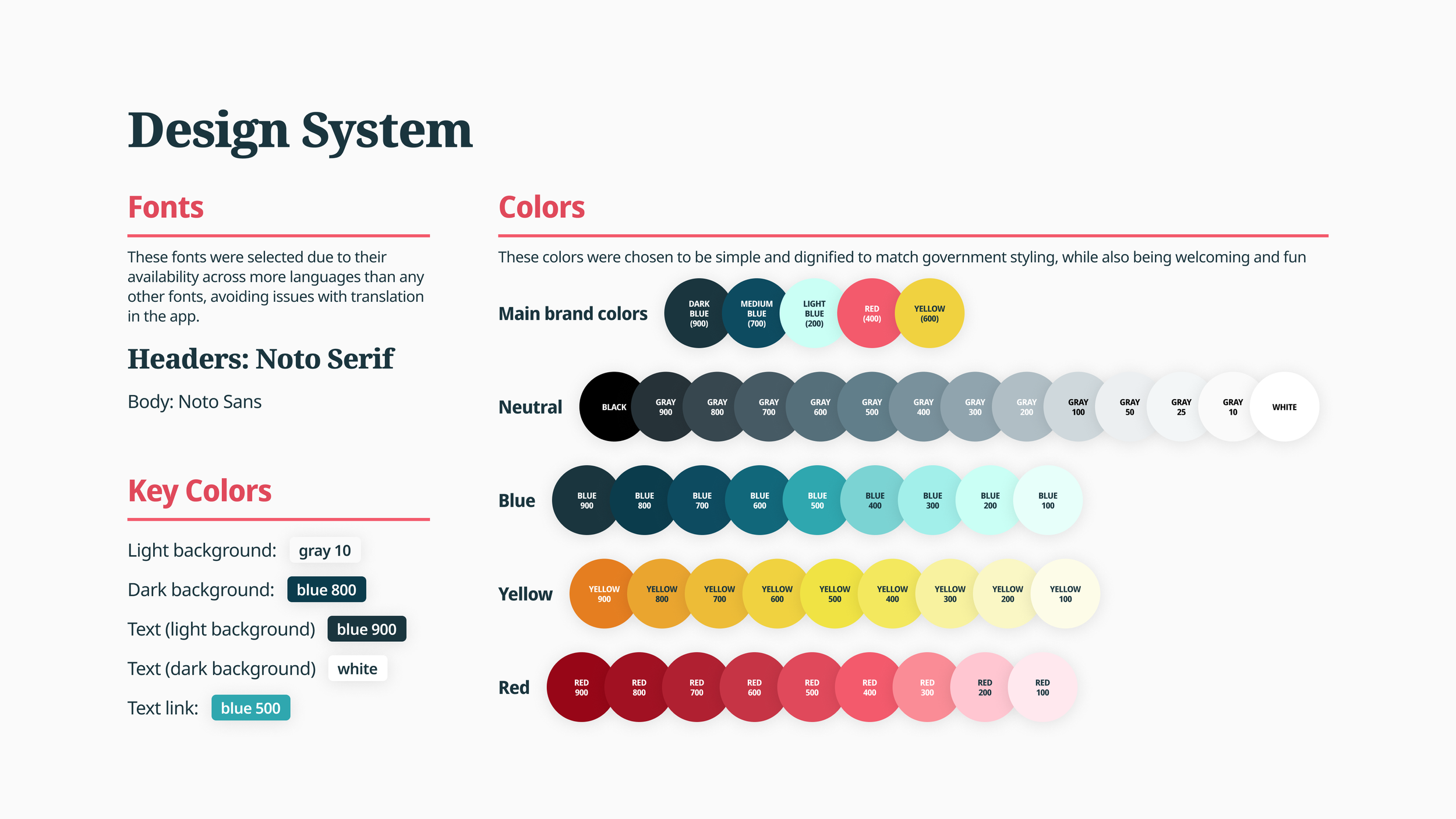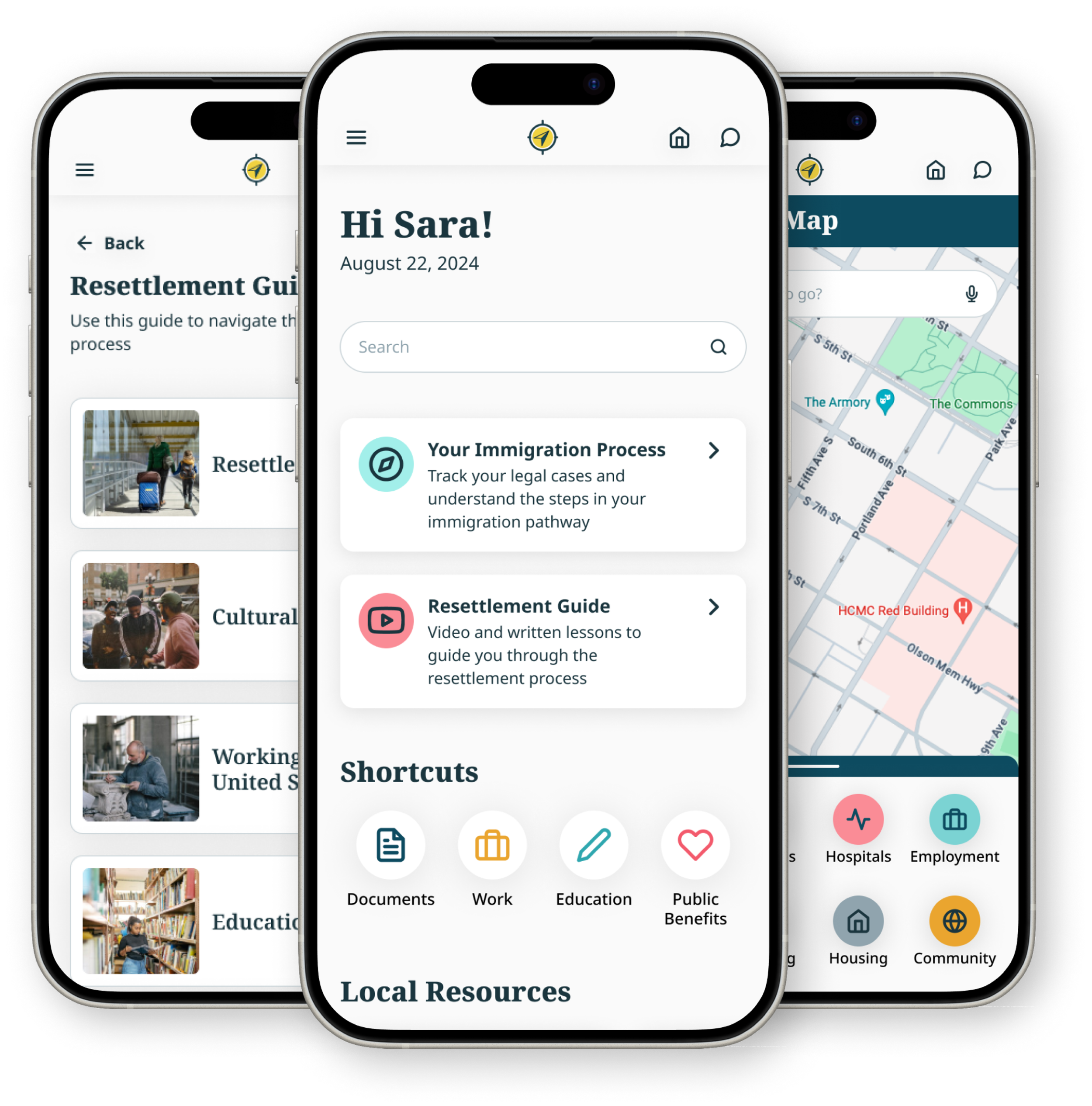
Entry Point
Easing the Resettlement Process for Refugees and Immigrants
The Context
Supporting refugees and immigrants in the resettlement process
Gonxhe Kandri-Simonson, a human rights expert and advocate with extensive experience working with refugees, reached out to our team to help her develop a digital tool to ease the transition and integration of refugees and immigrants into their new communities in the United States. Drawing from her personal experience as a refugee and her work with international resettlement organizations, Gonxhe identified key barriers and opportunities in the resettlement process that could be addressed with a digital tool.
Making a simple tool for a complex problem
Based on Gonxhe’s initial ideas, along with our own secondary research and user testing, our team developed Entry Point, an app which streamlines the resettlement process by providing a centralized platform for tracking the legal immigration process, managing documents, finding community resources, and learning to navigate life in the United States. While my team and I all contributed to each aspect of the project, my main role was in shaping a focused, intentional structure and consistent design for the app.
Role
UX Designer
Team
Abdi Ismail | Cassie Nieman | Nancy Dabla
Dates
July 29 - August 22, 2024
Methods & Tools
Secondary research, expert & user interviews, information architecture, usability testing, interactive digital prototyping, Figma, Zoom
Deliverables
Interactive prototype (and corresponding Figma design file with an initial design system and high-fidelity wireframes)
The Problem
The resettlement process is complex and confusing
Refugee and immigrant resettlement in the United States is a long, confusing, multi-step process with high stakes for applicants and often little support along the way. But improving this process is a complicated task, given the huge number and variety of applicants, the many different types of legal immigration pathways, and the countless nonprofit and government stakeholders with their own deeply engrained internal systems and regulations.
Focusing on the key challenges based on secondary and user research
While Gonxhe had initially identified the legal process as her main focus, our interviews with refugees, immigrants, and resettlement agency workers revealed an additional deep need for basic information to learn and navigate life in the United States. Thus, we expanded our understanding of the problem to encompass these two key challenges:
Understanding and tracking the legal immigration process
Accessing information, resources, and services to integrate and thrive in new communities
Some of the specific barriers that emerged in our user interviews are shown in the image below.
The Research
Exploring similar platforms
To understand the landscape of existing applications for refugees and immigrants and to gain insights on what types of features and designs would be useful, desirable, and feasible, we started by researching similar digital tools designed to support in the resettlement process. These existing tools fell into categories such as:
Understanding and tracking the legal immigration process
A variety of USCIS case tracking apps confirmed the feasibility of pulling live case data from U.S. government systems)Cultural orientation
Apps like SettleIn provided a framework for video and written learning modules that we adopted for Entry PointResource finding
Tools like FindHello inspired the map-based resource database we included in the appAI assistants
A growing collection of powerful AI immigration chatbots like immPath AI opened the door to including our own Entry Point AI chat, greatly enhancing the app’s capabilitiesTranslation
Addressing a need for language accessibility that came up in every user interview, translation companion apps like Tarjimly emphasized the importance of making language a top priority in our designSupport for resettlement service providers
These sites revealed the backend needs for resettlement agencies that Entry Point could potentially address in future developments
User research: gathering info and feedback
To better understand the challenges in the resettlement process and to improve upon on our initial designs for the Entry Point app, we completed several rounds of interviews with refugees, immigrants, resettlement agency workers, and other subject matter experts.
An initial round of exploratory interviews solidified the problems we would aim to address with Entry Point
A following round of desirability testing helped us restructure our initial designs and prioritize features to better support the users’ needs
A final round of usability testing revealed usability and accessibility issues in our design and allowed us to finalize a polished, user-tested, high-fidelity prototype for the client
After User Testing
Based on the feedback we received, we added an onboarding sequence and restructured the home page and the app as a whole into chunked sections with clearer purposes and descriptive buttons. Users were much more receptive to this design and found it “clear and easy” to navigate.
Before User Testing
Individuals found our initial draft of the home page confusing. Without an onboarding process, clear structure within the app, or additional labeling on the grid of buttons on the home page, users told us they found the point and features of the app to be unclear.
The information architecture diagram was critical in structuring the user experience of this app, from the onboarding process through to accessing specific resources, such as the Resettlement Guide, document management tools, and local services. By visualizing the relationships between different sections of the app, we ensured that users could easily find what they were looking for without unnecessary complexity.
The Design
Focusing on targeted features to address the problem
Based on our research into the challenges refugees and immigrants face during the resettlement process, we focused our design on goals that address the two main challenges we identified with corresponding features:
1. Supporting with the legal resettlement process
Immigration pathway information and steps
Case tracking
Documents management
Immigration-specific AI assistant
2. Connecting to critical information, resources, and learning to support community integration
Resettlement Guide organized by topic with relevant information, video and written learning modules, news, and tools
Community resource database and searchable map
See selected annotated wireframes from the final design below, view the full report, or check out the interactive prototype.
A localized tool for a global population
[Information about more specific design considerations to come]
Crafting an intentional design system
[Information about design system decisions to come]
Next Steps
Building out the app to be a viable tool
Given my passion for immigration issues and experience working with refugees and immigrants, I would love to have the opportunity to continue working on Entry Point with Gonxhe as she determines further UX support needed through the development process. Next steps could include:
Additional desirability and usability testing with a larger sample of refugees and immigrants from various immigration pathways to determine how best to support folks with a wide range of immigration statuses
Narrowing down which immigration pathways the app will focus on to more intentionally design for these user groups
Determining how resettlement agencies might integrate into using this app, and what information they would have access to in order to assist in easing the resettlement process
Finding a simplified term for ‘resettlement’ that’s easily understood across cultures
Additional exploration of the security needs and implications of building an app that stores sensitive information for vulnerable populations—especially if resettlement agencies are given access to the app in future development
Interactive prototype

